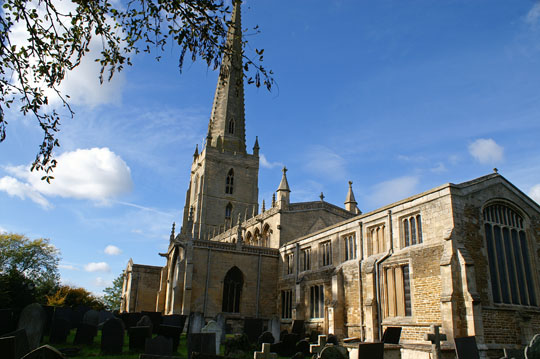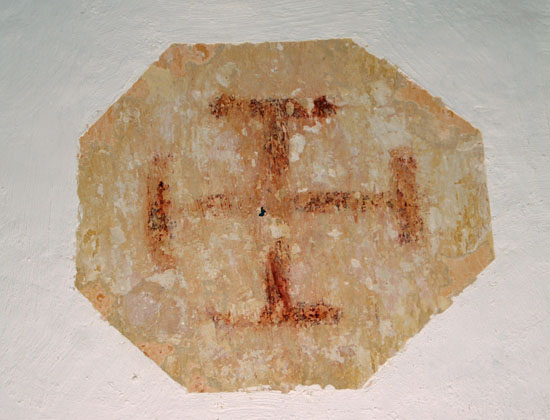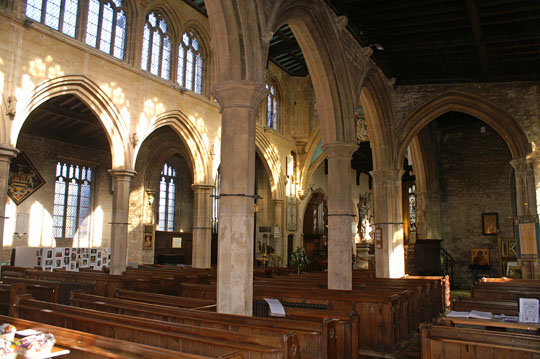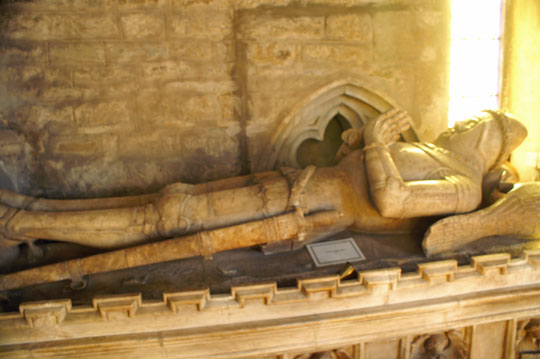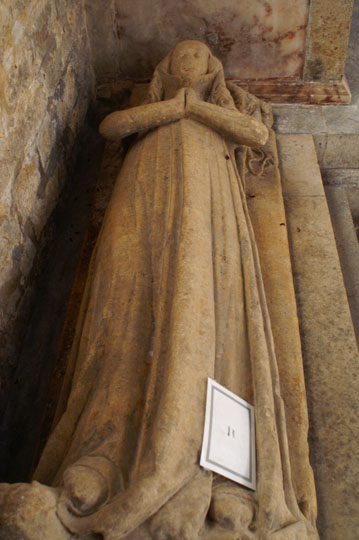|
|
||||||||||||||||||||||||||||||||||||||||||||||||||||||||||
|
Please sign my Guestbook and leave feedback |
||||||||||||||||||||||||||||||||||||||||||||||||||||||||||
|
Recent Additions |
||||||||||||||||||||||||||||||||||||||||||||||||||||||||||
|
|
||||||||||||||||||||||
|
deaths of two of his sons in infancy were caused by “wicked practice and sorcerye”, a belief that led to the death of three women, two of whom were hanged at Lincoln in 1618. See the “footnote” for more on this. Besides the monuments, the main interest for us lay in the many carvings within the nave. Here there are grotesque animals running down between the arcades and some particularly gormless-looking faces. Simon Jenkins refers vaguely to the “seven deadly sins” but I struggled to identify them. Over the huge porch a couple of spooky figures stand guard, one clutching a bell. Best of all is the carvings is near the chancel arch - a man with a two headed dragon invading his eye and mouth. This is not easy to discern without binoculars ot telephoto lens. Finally, there are the remains of wall painting above the chancel arch and its somewhat overpowering arms of Queen Victoria. |
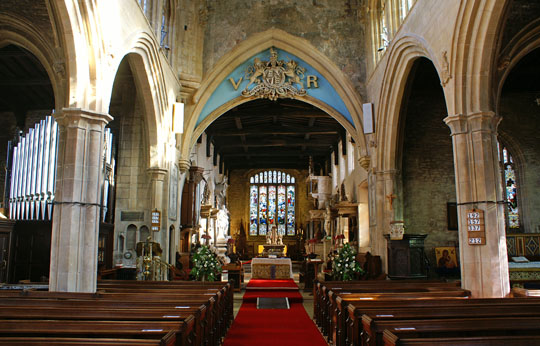 |
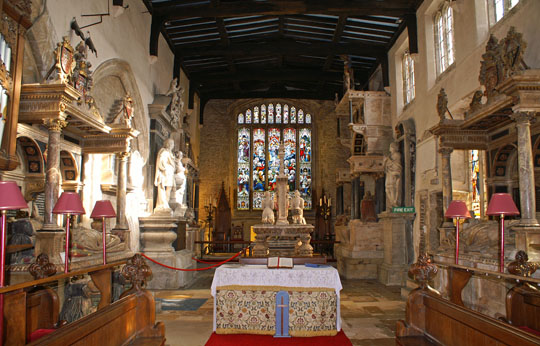 |
||
|
|
||||||||||||||||||||||||
|
|
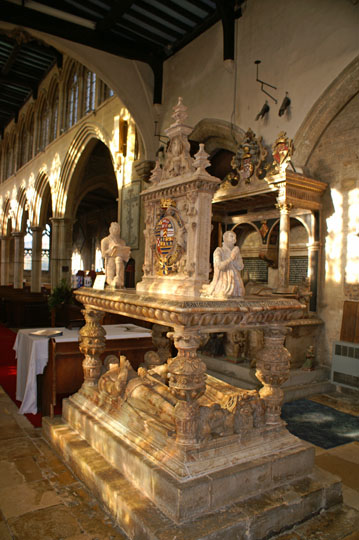 |
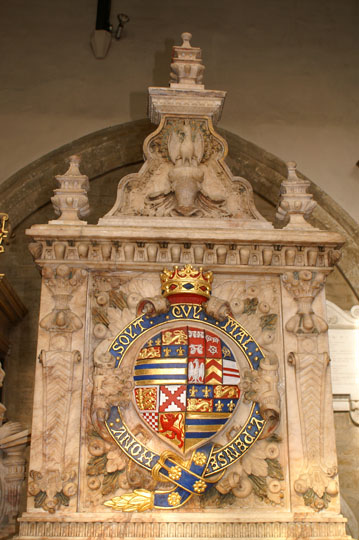 |
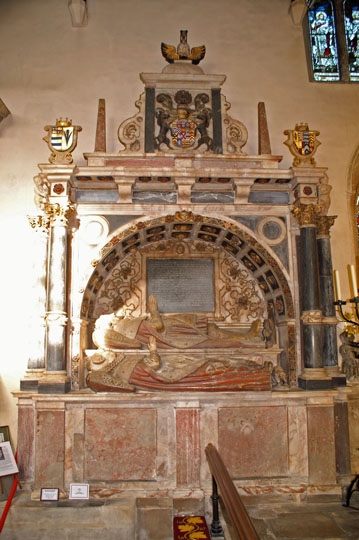 |
|
The tomb of the second earl, Henry Manners (1563), is the first thing that greets you in the chancel. The effigies are, remarkably, asleep under a dining table - or altar table - while the “weepers” kneel above them. Henry’s breastplate is uniquely made of laminated plates, rather than being a single piece, and in his hands he carries a book as well as his sword. |
The tomb of the 5th earl, Roger Manners and his wife, Elizabeth. She was the daughter of the poet, Sir Phillip Sydney and the granddaughter of Sir Francis Walsingham, Elizabeth I’s spymaster. |
||||||||||
|
The coat of arms surmounting the second earl’s monument demonstrates the glorious state of perservation of all of these monuments. |
|||||||||||
|
Roger joined the Earl of Essex’s revolt against Elizabeth I. To her chagrin, Countess Elizabeth was exiled from court. She gathered a coterie of literary admirers including Ben Johnson with whom she collaborated in dramatic productions, and Francis Beaumont. Johnson felt her poetry matched his own, but none survives. he wrote three poems for her. Her death in 1612 was rumoured to have been the doing of Sir Walter Raleigh, no less, and provoked a poem by Beaumont. This lady kept interesting company! |
|||||||||||
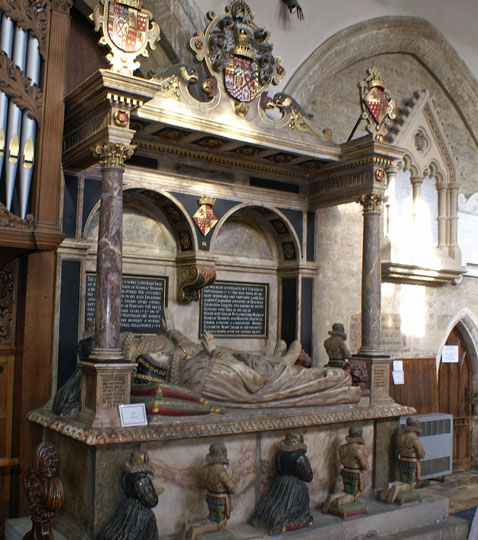 |
|||||||||||
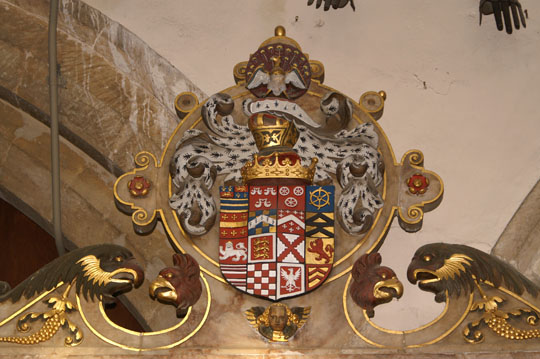 |
|||||||||||
|
The monument (left) of the 4th earl John (1559-1588). He was earl for only one year before his death. Above is detail from the canopy. |
|||||||||||
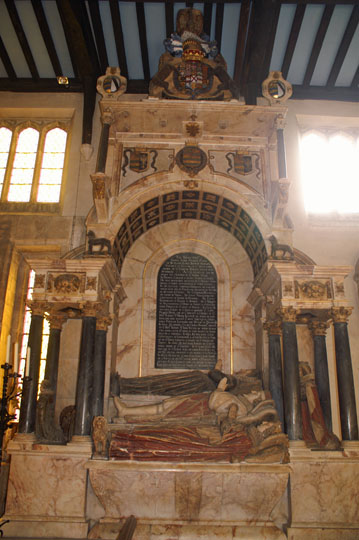 |
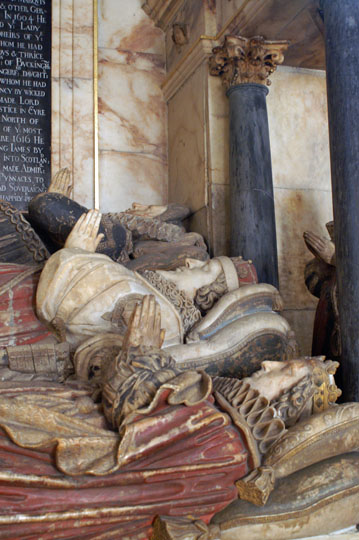 |
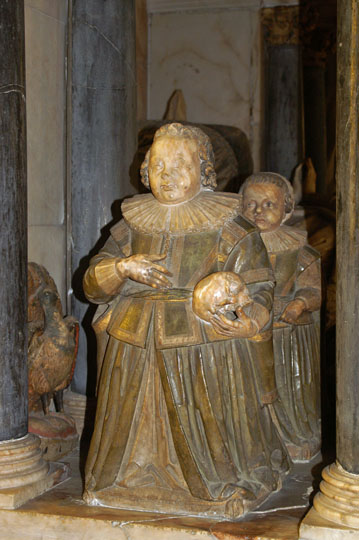 |
|
The monument to the 6th earl, Francis. This is the “Witchcraft Tomb”. In the right hand picture we can see the effigies of the “bewitched” children, each carrying a skull to denote their untimely deaths. Also of interest, however, is that the earl’s effigy has the effigy of his two wives above and below his own. This is arguably one of the finest church monuments in England. |
|
|
||||||||||||
|
This monument is simply labelled “Woman c1310. This predates the existing structure. |
|||||
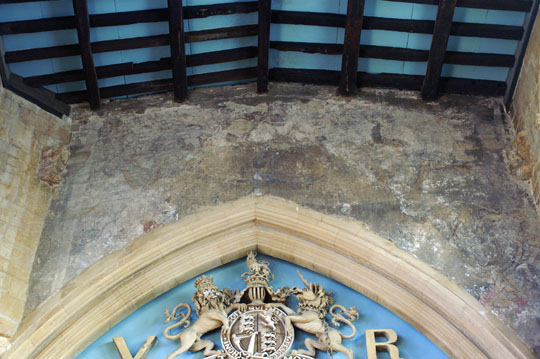 |
|||||
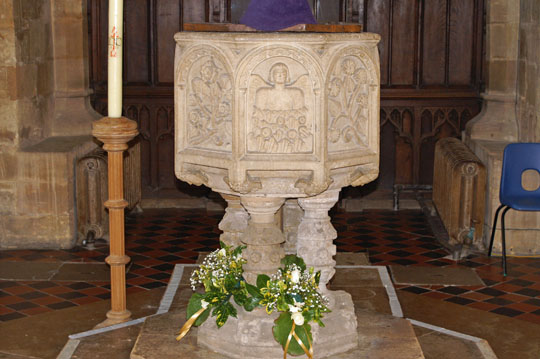 |
|||||
|
|
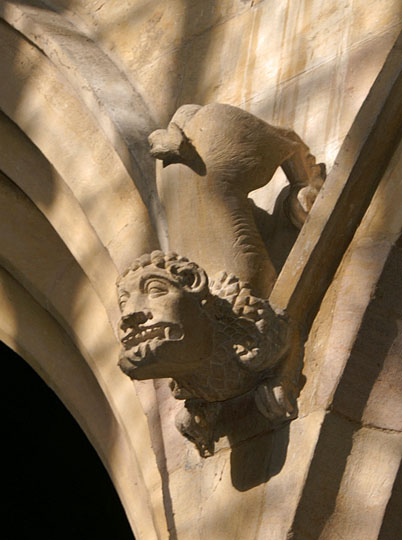 |
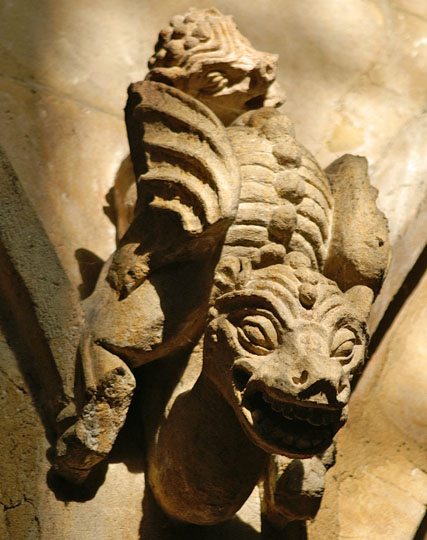 |
|||||
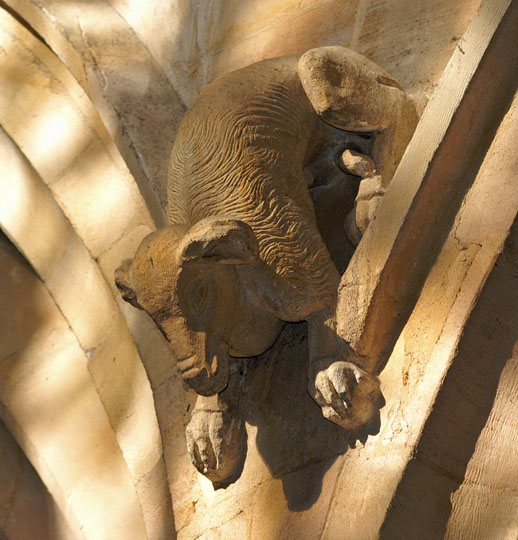 |
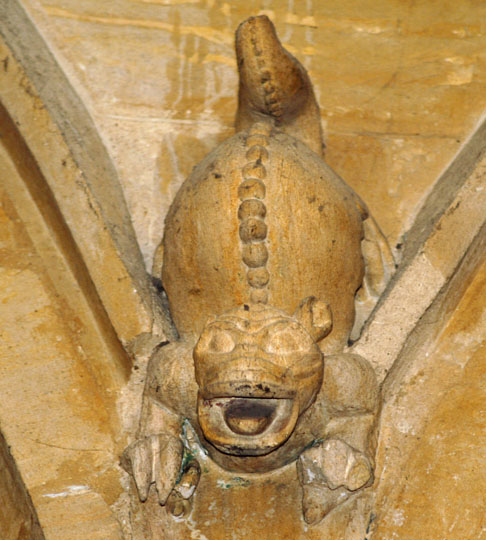 |
|||||
|
This motley collection of fantastic creatures populate the areas between the arcade arches of the north aisle. There is nothing discreet about them: they are large and proud! I particularly like the creature in the bottom left picture. Like many church architects he clearly has no knowledge of the the physiognomy of an elephant beyond its trunk - but this doesn’t stop him inventing the rest! |
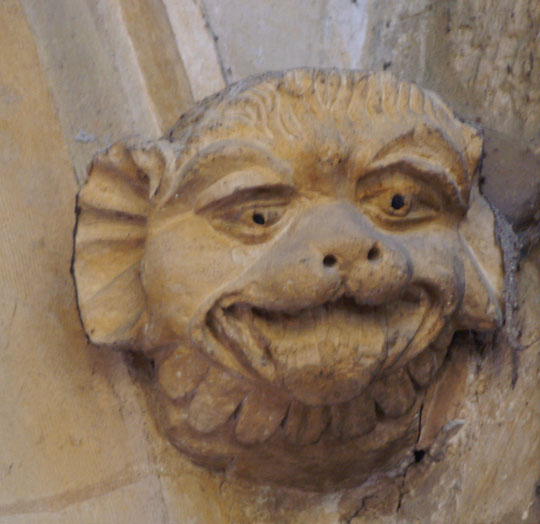 |
|||||
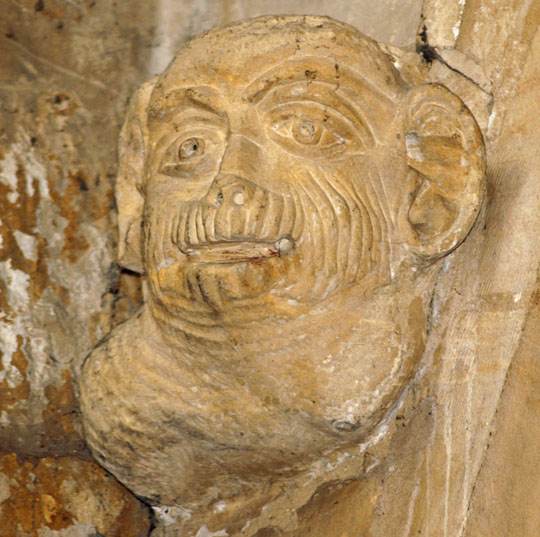 |
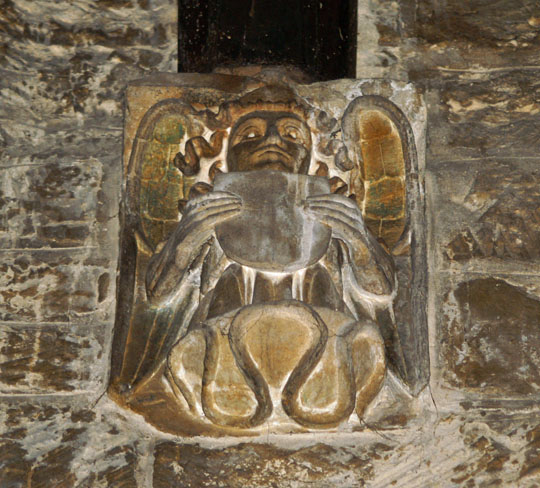 |
||||
|
One the left we have two of the grotesque heads that adorn various parts of the nave. I particlarly like the ears! The angel to the right is a corbel in the south transept. |
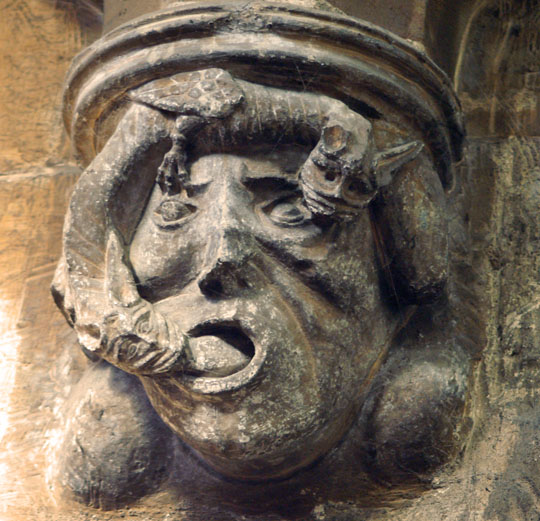 |
|||||||||||||||||||
|
I am afraid that I like this grotesque image near the chancel arch more than all of the magnificent Rutland monuments! Note the tiny “wings” on the dragon! The dragon looks benign enough, but I don’t think its intentions are friendly! What does this represent? Lies perhaps? |
|||||||||||||||||||
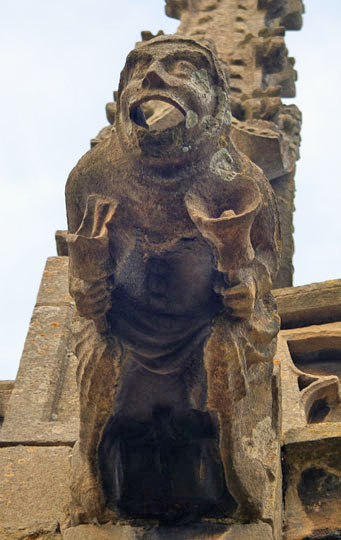 |
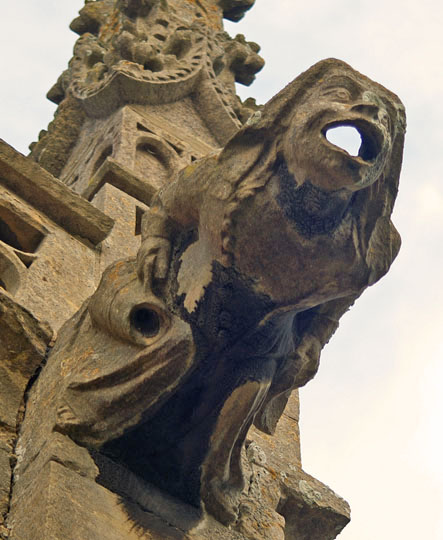 |
||||||||||||||||||
|
These two stand guard over the south porch. |
|||||||||||||||||||
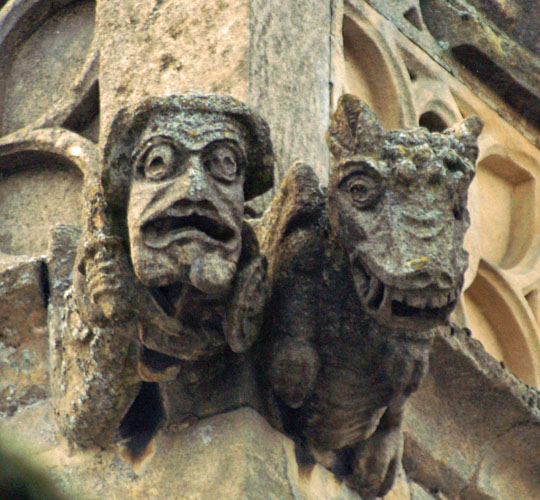 |
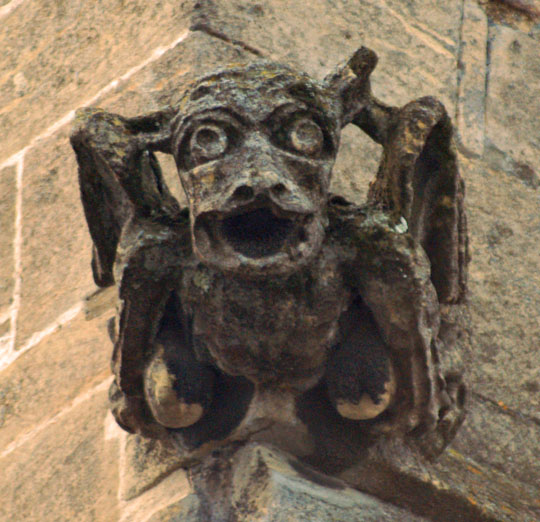 |
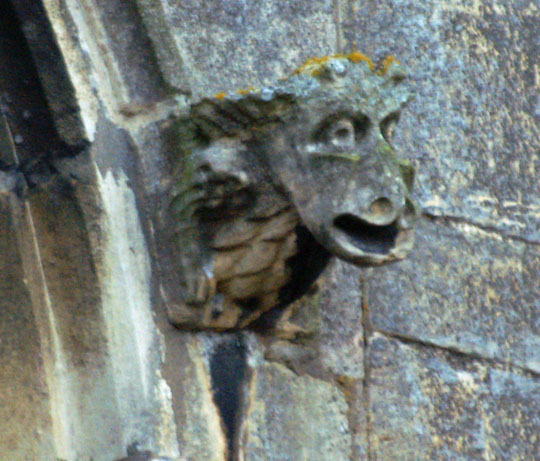 |
|||||||||||||||||
|
Various grotesques from around the outside of the church. |
|||||||||||||||||||
|
Footnote on the “Witches of Belvoir” |
|||||||||||||||||||
|
In a time when the Christian faith is itself subject to so much questioning and where atheism is no longer seen as the domain of the wicked and profane, it is hard to comprehend that only three or four hundred years ago witchcraft was seen not as a superstition but as an everyday fact of life. The last witch executed in England was Alice Molland at Exeter as recently as 1684. The last execution for witchcraft in Europe was as recently as 1782 in that famed hotbed of social upheaval and anarchy - Switzerland! That’s 5 years after the American Declaration of Independence and 7 years before the French Revolution. The facts of the Belvoir case as we know them is that Joan Flower of Bottesford and her daughter Margaret were dismissed from the service of the Earl and Countess for theft. When the Earl’s son, Lord Ross, experienced a number of illness and eventually died, and the Earl and Countess themselves suffered “dreadful convulsions” suspicion fell on the two dismissed women. They were arrested on the Earl’s orders in Christmas 1617 or 1618, along with Margaret’s other daughter Philippa, and “examined” at Lincoln. Joan Flower fatefully asked for bread and butter and said she wished she might choke on the food if she was guilty. Rather conveniently, you might think, she promptly did just that! Cynics such as myself might ask whether the bread and butter had been poisoned, bearing in mind that the “authorities” presumably bent over backwards to please the Earl. Others speculate that the woman poisoned herself to avoid the agonies that she knew were to come. The two daughters now admitted to a variety of fantastical machinations. Their mother’s cat, Rutterkin, was her “familiar”. They had stolen the glove of Lord Ross, dipped it in boiling water, stroked it along Rutterkin’s back and pricked it. Feathers from the Rutlands’ bed and pair of gloves had been boiled in water and mixed with blood and spells cast to prevent the Rutlands’ conceiving more children...and so on and so on. They implicated three other unfortunate women one of whom, Anne Baker, was a resident of Bottesford. They too confessed to all manner of iniquities. The daughters were hanged at Lincoln. There seems to be no record of what happened to the three they had implicated. Such was the depth of the Rutlands’ belief in the malevolent power of these unfortunate women that they even attributed the death of their daughter to them after they were all dead! We can reasonably speculate that the daughters knew that their own fates were sealed when their mother failed her self-initiated test. Lincoln Gaol would have been no place for the faint-hearted and we all accept nowadays that, if sufficient pressure is applied, a tortured soul will confess to just about anything. I had wondered if the women’s confessions were to ensure hanging rather than burning as a means of death, but I was surprised to find that the burning of witches was not common practice in England, although rather more so in Scotland. As a felony, hanging was the normal punishment in England. |
|
Another Footnote |
||||
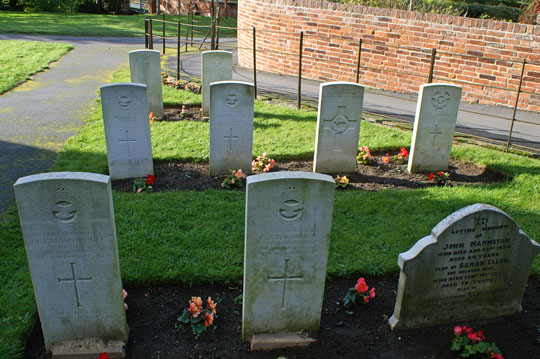 |
||||
|
In the churchyard is this cluster of 8 war graves for Commonwealth airmen killed during World War II. RAF Bottesford was a Bomber Command base flying initially Avro Manchester and later the much more successful Avro Lancaster aircraft. These men died very young and, quite possibly, very painfully. This is a moving place. |
||||
|
|
